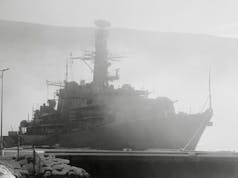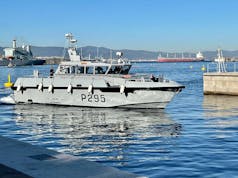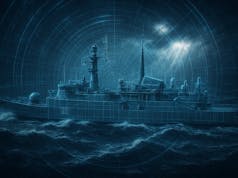The Ministry of Defence has confirmed the planned installation schedule for the Glamox Helicopter Visual Landing Aid System (HVLAS) across the Royal Navy’s Batch 2 Offshore Patrol Vessel fleet, according to the department.
Responding to a written question from Ben Obese-Jecty MP, Minister for Defence Readiness and Industry Luke Pollard said the installation programme for HVLAS will proceed in line with each vessel’s “five Annual Recertification Maintenance Periods.” He added that adjustments may be made “due to operational requirement, or if there is a funding and timing opportunity to enable the advancement of installation work.”
The Glamox HVLAS provides enhanced visual guidance to pilots during approach and landing in low-visibility or night-time conditions. It improves safety margins for embarked aviation operations by providing stabilised, high-intensity visual cues aligned with the ship’s motion and deck configuration.
Pollard confirmed that “Wildcat are the Royal Navy’s cleared aircraft and HVLAS is suitable for all aircraft from Partner Nations, although limited by their size and weight.” This means that while the system can support a range of allied helicopters operating alongside Royal Navy ships, compatibility may vary depending on aircraft class and load.
The Batch 2 River class Offshore Patrol Vessels, HMS Forth, HMS Medway, HMS Trent, HMS Tamar and HMS Spey, serve a global presence role for the Royal Navy, conducting maritime security, counter-narcotics and patrol operations in regions from the Caribbean to the Indo-Pacific.
The HVLAS is made up of a stabilised horizon light bar and glide path indicator which feeds valuable information to pilots during approach and landing, particularly in adverse conditions or during night operations. There are additional lights on the flight deck itself that highlight the edges so pilots know where to land, and laser eye-lines so they can land in precisely the right spot. The lighting system is also fully compatible with night-vision devices and includes variable intensity controls for improved visibility.














Great added Improvements to these really great vessels.
Let’s have another 5 this time with Hangers and some MMS, we could call them T32’s.
There is the longer “Avenger” version of the Rivers, 117m i think it is. Complete with hangar, vls and a compact 5″ which might be over the top. Might as well go for more T31 or variants of that.
We will be short of hulls for a while; makes sense to leverage what we have. If R2 can deploy a Peregrine UAV, lily pad allied helicopters and
refuel and rearm a Wildcat. All good 👍
Maybe if they tidied up all the clutter behind the funnel and move the crane to one side, they might be able to construct a hangar structure or have an extendable hangar?
NavyLookout did an article a while back on enhancement options for R2. One of the upgrade options, ‘OPVMax’, was similar to what you suggest and had a 57mm. But it looks like the RN just going for optimising the R2 in the diplomatic gunboat / constabulary and surveillance roles. I think this addition might make them a more use useful asset to a task group or for small RM insertion. Not long to wait now for the T31s.
I wonder what they plan to land: Peregrine, Proteus, Wildcat or all of the above. Peregrine is the obvious upgrade, I hope it comes soon, but does this system need a pilot to interpret it?